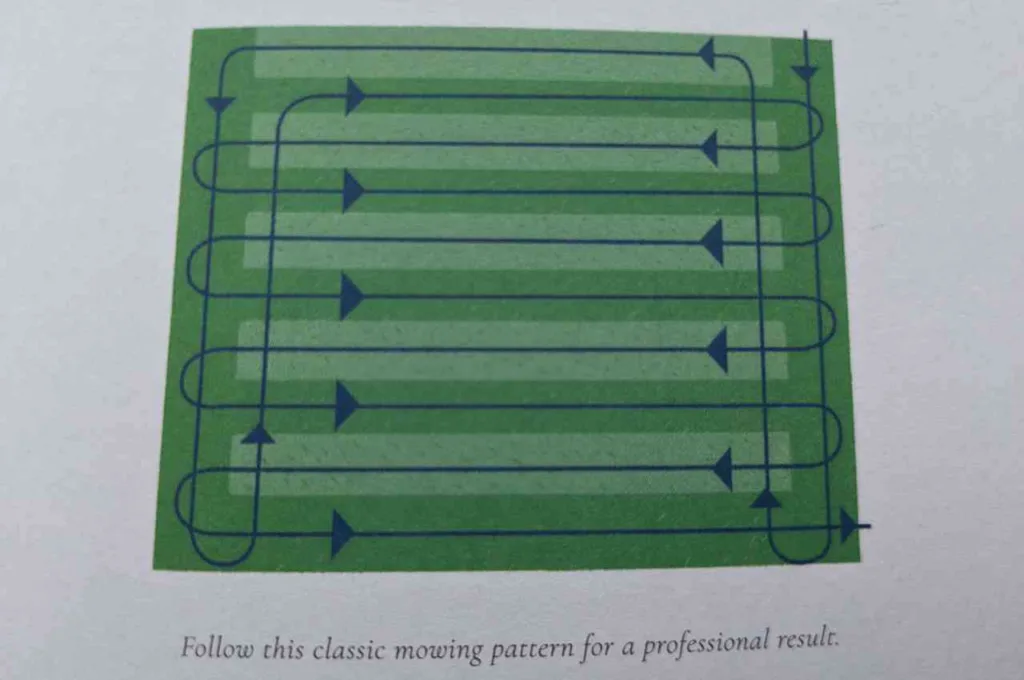If you’re new to lawn mowing, it’s been a while since you last mowed a lawn, or you just want to know the best start-to-finish process for mowing a lawn, this guide is for you.
I’ve shared how to mow your lawn in 9 easy steps.
✅ Key Takeaways:
To mow your lawn, follow these steps:
Prepare your mower to mow
Check that your grass is ready for mowing
Clear your lawn
Put on protective gear
Mow the perimeter of your lawn
Mow back-and-forth strips of your lawn
Empty the grass box as you go
Use a strimmer to get the edges
Clean & pack up your equipment
- Our top tips for mowing your lawn are to make sure your mower is well-maintained, aim to reduce the height of your grass by one-third, and cut fortnightly in early spring and once a week in spring and summer.
Table of Contents
📋Step-By-Step Guide To Mowing A Lawn
Let’s look at the 9 steps you should follow to mow your lawn with a conventional push mower:
1️⃣ Step 1: Prepare Your Mower
First, you need to prepare your lawn mower to start mowing. This is especially important if you’re doing the first cut of the year and the mower has been sitting in storage all winter.
There are a few different jobs involved in preparing your mower:
Check the entire mower for damage or wear
Check nuts and bolts for tightness and tighten them if needed
Clean the mower to remove any dust or dirt from storage
Check that the mower blades are sharp, and sharpen dull blades if needed
Set the mowing height to your preferred cut height
If you have a petrol mower, you’ll also need to check the fuel and oil levels, and top up or replace the fuel/oil when necessary.
A cordless battery-operated mower will only work with a charged battery, so charge the battery while preparing the mower for use.
- Brand: Bosch
Price: ££
Power source: Electric corded
Cutting width: 34cm
Cut height range: 20-70mm
Weight: 11.09 kilograms
Grass box capacity: 40 litres
Dimensions (DxWxH): 61.6 x 37.8 x 40.2cm
Power: 1300 W
2️⃣ Step 2: Check The Condition Of Your Lawn
Before you start mowing, you want to determine that it’s the right time to cut your grass.
While it’s convenient to have a lawn mowing schedule, your grass probably won’t always need cutting when you have some free time.
The time of the year, the grass type, and the soil conditions all affect the speed of grass growth.
Rather than mowing on a particular day, check the height of your grass and mow when the grass is tall enough.
You should only aim to mow the grass blades to one-third of their original height. So, if you like your lawn to be about 4cm high, wait for your grass to grow to 6cm before you cut it.
3️⃣ Step 3: Clear Your Lawn
Once you’ve determined that your lawn is ready for a cut, prepare the area by clearing any lawn furniture, play equipment, or debris that can easily be moved.
Depending on your garden setup, you might have to move large items over to one side of your lawn while you mow the other side, then swap mid-way through.
Heavier items like sheds and large play equipment will probably need to stay where they are, and you can strim around them after mowing if needed (more on that later).
After moving the large items, do a quick visual inspection for sticks, leaves, and rocks, and remove them from your lawn to prevent them from clogging your mower.
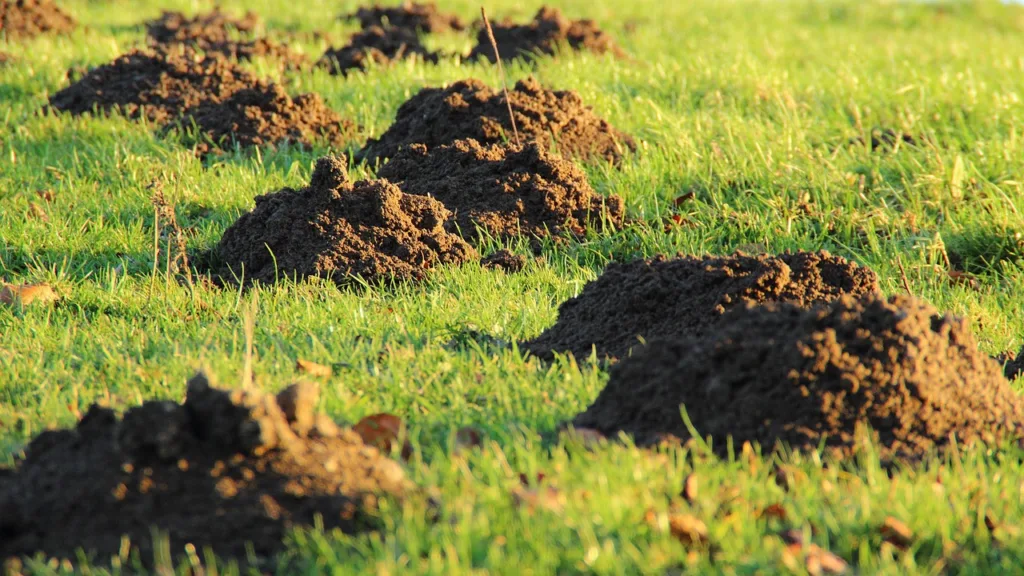
4️⃣ Step 4: Put On Protective Gear
To stay safe while you’re mowing, put on protective gloves, boots, and eyewear before you get started.
This will protect you from flying debris and reduce your risk of injury from the blade.
Some mower manufacturers recommend that you wear ear protection to prevent hearing damage from the loud engine. This is especially important for high-decibel petrol lawn mowers, which could provoke noise-induced hearing loss if they’re not used with sound-muffling earplugs or ear muffs.
5️⃣ Step 5: Mow The Lawn Edges
Now you can get started with the mowing. Position your mower at one corner of your lawn and start it up.
Mower around the perimeter of your lawn, ending back at the place you started. Mow around objects, like trees and bushes, getting as close as you can without causing an obstruction.
Why bother mowing the lawn edges first? I recommend mowing your lawn’s perimeter because it squares off the mowing space and means you have more space to turn after every lap of your lawn, so it’s easier to create straight lines as you mow.
If your mower is large or you want even more room to turn, consider mowing around your lawn twice: once on the very outer edge and once one mower’s width in.
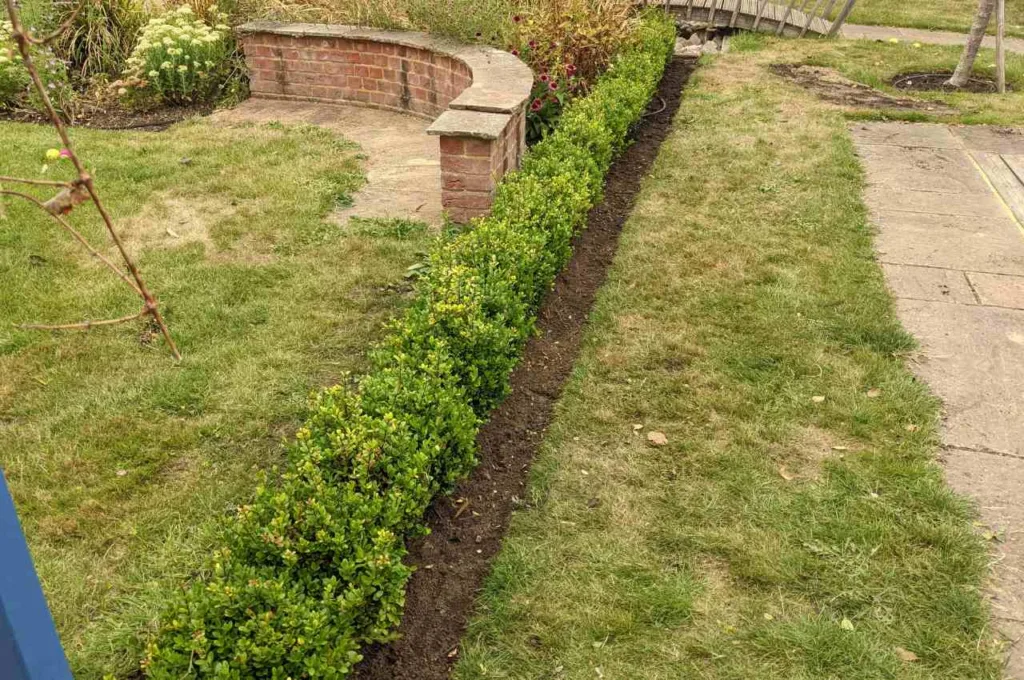
6️⃣ Step 6: Mow The Lawn In Straight Lines
Now you’ve done the perimeter, mow in straight lines back and forth along your lawn.
Start at one corner and mow a lap of the widest section of the lawn. When you reach the other side, turn your lawn mower and walk back in the opposite direction, mowing a slight overlap over your previous path to avoid missing spots.
Continue to mow laps of your lawn until you reach the end of the garden and all the grass blades are cut.
7️⃣ Step 7: Empty The Grass Box Periodically
If you’re mowing with a grass box or grass bag (rather than mulching, or dispersing grass clippings onto your lawn as you mow), you’ll need to empty the grass box as you go. Put the cut grass on your compost pile or in your gardening bin.
If you don’t empty the grass box and allow it to get full, the machine will eventually become so clogged that the mower blades won’t be able to properly cut your grass.
Modern mowers have a grass box fill indicator that tells you when you need to empty the box. Otherwise, you’ll need to check the box periodically and empty it when it’s full.
If you’re mowing a medium-sized lawn, expect to empty the grass box at least twice, depending on the length of the grass blades, your grass type, and how much you’re taking off.
Don’t want the hassle of emptying the grass box? Choose a mower with a mulching feature. Mulching provides extra nutritional value that can give you a healthier, greener lawn.
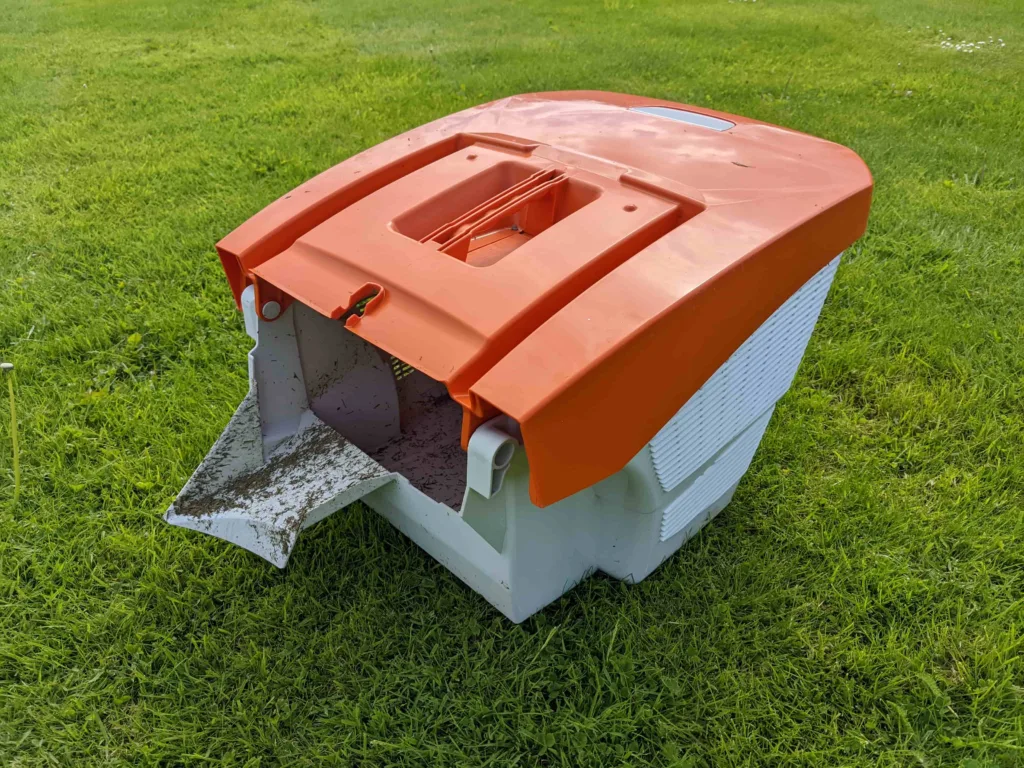
8️⃣ Step 8: Strim The Lawn Edges
If there’s any grass that your lawn mower couldn’t reach, use a strimmer to cut the edges.
Areas that might need to be strimmed include around the base of trees and the edges of garden beds.
If you don’t have a strimmer, you can use lawn shears to achieve the same outcome.
9️⃣ Step 9: Clean & Pack Up Your Equipment
Finally, once you’re happy that you have the perfect lawn, clean and pack away your lawn mower and other equipment.
Unplug the mower and lay it on its side. Put on a pair of protective gloves, then remove the grass clippings from the mower blade and clean the underside of the mower to remove dirt and debris.
Use a soft brush to clean the other parts of the mower, including the fan, grass chutes, grass box and lid, and all air inlets, ensuring that they’re free from grass clippings.
Cleaning your mower is as important as the lawn maintenance itself. It prevents the spread of grass disease, giving you a healthy lawn throughout the year, and reduces clogging that could affect the mower’s performance.
🧾 6 Lawn Mowing Tips
Below, I’ve shared some of my top lawn-mowing tips for your garden:
🛠 Keep Your Mower Well Maintained
Before every lawn mowing season, give your mower a thorough assessment and check that all parts are in good working order. Now is the time for mower blade sharpening, nuts and bolts tightening, oil top-ups, and any other servicing or maintenance your mower might require.
A properly maintained mower will provide a clean, consistent cut and reduce the likelihood of lawn diseases and other aesthetic problems.
📏 Reduce Your Grass Height By One-Third
When you set your mower’s cutting height, aim to reduce your existing grass height by one-third.
Cutting your grass too short could weaken your lawn structure and leave your grass exposed to sun damage, so it’s best not to go too overboard with your grass cutting routine.
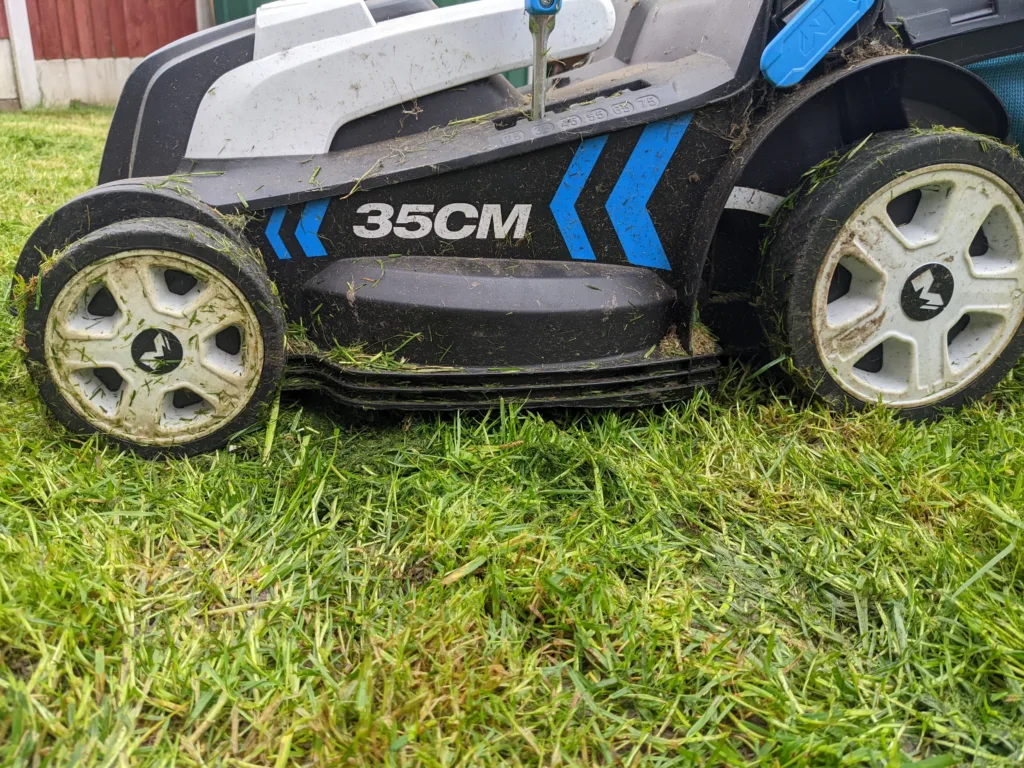
📅 Cut Fortnightly In Early Spring
Once early spring approaches and the last frost has passed, begin cutting your grass once a fortnight.
Grass grows more slowly at this time of the year so you shouldn’t need to cut it any more frequently than this. Excess cutting could force the grass plants to focus on growth rather than deeper rooting, causing your lawn to become patchy.
🗓 Cut Once A Week In Spring And Summer
In the main growing season (spring and summer), grass grows faster and you’ll probably need to cut it once a week.
Try to keep up with this schedule to avoid having to cut long grass, which is notoriously difficult to manage, especially if you’re using a manual mower.
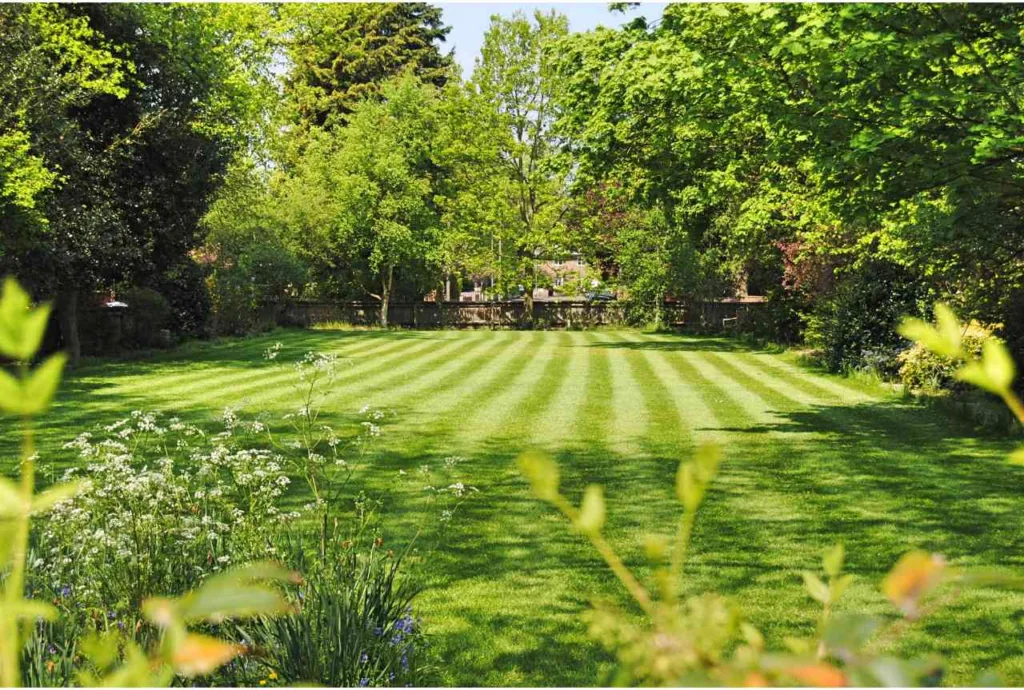
🌧 Avoid Cutting Wet Grass
Only cut your grass on a dry day. Don’t mow your lawn while it’s raining or immediately after a rainy spell, since the mower will leave marks in the wet soil and the grass clippings will clump and get clogged in the mower.
Cutting wet grass could also lead to plant fungal diseases and increase your risk of electrocution when using an electric mower, so stay safe and only mow the lawn when it’s dry.
📐 Don’t Forget Your Edges
To give your lawn a manicured overall appearance, make sure the edges are trimmed and neat. Some mowers have an edge-cutting feature. Otherwise, you may need to use a strimmer to cut grass around the lawn perimeter.
For the most professional finish, use a half-moon tool to trim the overhanging grass around the edges of your lawn, especially around paths and sections of paving.
❓ How To Mow A Lawn: FAQs
♻️ How do I efficiently mow my lawn?
The best way to efficiently mow your lawn is to first mow the outside edge of the lawn, then mow the rest of the lawn by mowing back-and-forth laps along the widest part of the lawn. That means you’ll make fewer turns and do fewer laps of your lawn, saving you time and energy.
⬆️ How do I cut stripes into my grass?
To cut stripes into your grass, do back-and-forth laps of your lawn with a mower that has a rear roller. The roller will flatten the grass in the direction that you’re walking, and the angle of the light hitting each mowed row of grass will give the appearance of lawn stripes. You could also experiment with a criss-cross mowing pattern if you want to be even more creative.
🏞 How do you mow sloped ground?
The safest way to mow on slopes is to cut in lines perpendicular to the slope, rather than mowing up and down the slope. Mowing up and down a slope increases your risk of injury, especially if you’re operating a heavy petrol-powered mower. If you’re concerned about cutting grass on a slope, consider buying a manual reel mower, which is lighter and less dangerous to use on hilly land.
🥵 What’s the easiest way to mow a lawn?
The easiest way to mow a lawn is to walk in straight lines, overlapping each line slightly so you don’t miss bits. If your lawn is shaped irregularly, mow one straight line down the middle, then mow one side of the lawn, then the other. The central line will make it easier for you to keep track of what you have and haven’t mown.
📝 What order should I mow my lawn?
The best order to mow your lawn is to start by mowing the perimeter (around the edges) of your lawn, then mow in back-and-forth stripes to cover all the ground within the perimeter. However, the order of mowing isn’t really important – you could choose to mow your lawn’s inner area first before doing the perimeter after.
✈️ How do you mow a lawn with a hover mower?
To mow a lawn with a hover lawn mower, mow in laps of the widest part of your lawn, turning at each end so that you’re mowing in a back-and-forth direction. Hover lawn mowers give you more freedom of movement, so if you have an awkwardly shaped section of your lawn, you don’t have to mow in a straight line. It might make more sense to maneuver the mower around various curves and obstacles around the lawn.
❌ Is there a wrong way to mow a lawn?
There’s technically no wrong way to mow a lawn, but there are certain lawn mowing methods that will add unnecessary time to the job. Avoid mowing in laps of the narrower section of your lawn as this will take longer because you’ll need to do more laps during mowing. Also don’t cut wet grass because this could cause electric shock or affect your grass health, and don’t mow too often as this could deplete the nutrients and can increase the build-up of thatch.
